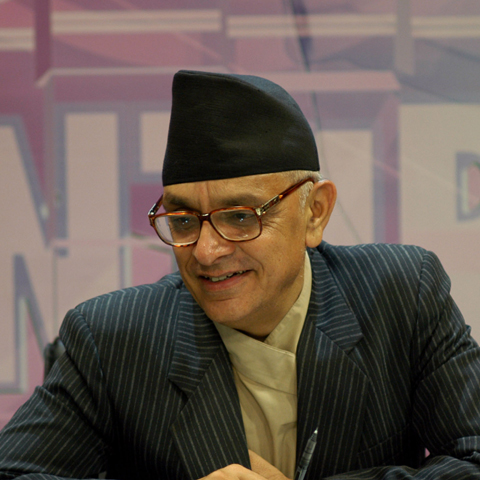Columns
A toxic cocktail
An alliance between wealth and power is a structural problem that all nations have to handle.
Prakash Chandra Lohani
Nepal is headed for an economic crisis that has not been taken seriously by the government. There are three components of this evolving situation. First, the regular expenditure of the government has been rising faster than the increase in revenue, thus leaving smaller space for development expenditure. Second, the efficiency of public investment shows no sign of improvement. One research indicated that Nepal's capital-output ratio may be as high as eight. Corruption and the lack of economic discipline have been rising. There seems to be a general feeling among the politicians in power that fiscal indiscipline is a phenomenon that is part of democratic politics. Naturally, budgetary constraints are regularly ignored; massive corruption in governmental procurement and cost escalation of major projects under the convenient concept of "variation" have been rampant. Those in power never tire of pleading for efficiency and probity in society, but when it comes to spending, the government is liberal and quite at ease in allocating spending on off-budget items of interest to the high and mighty. There is little fear that stealing public money will cause any problem since institutions that have been set up as watchdogs against corruption have been either legally emasculated or staffed by loyalists whose job security required silence and inaction.
The third ingredient of our ongoing decay is the gradual erosion of law and order. The constitution has all the democratic provisions of checks and balances in the system. However, in actual implementation, it is ignored when it poses difficulties to the ruling elite to impose their wishes. So budgetary discipline is regularly ignored; it is no longer a tool for effective control and project implementation. Gross misuse of public funds is of no consequence if it fulfils the design of those in power. Recently the government announced a host of policy decisions designed to influence the voters even after the announcement of the national election by the Election Commission. It was blatantly illegal, but it was no concern to the government.
A rational process
Rapid economic development is not automatic; it is a rational process that requires us to visualise the link between the ends and means of public policies. The economy can remain stagnant for centuries when economic development and technological innovation does not find a place in governance. For example, the British economy remained virtually motionless for four centuries between the 13th and 17th centuries, growing at just .02 percent. Our country's economy remained virtually motionless for over a century during the Rana period. In developing countries that declare rapid economic development as the national goal, the inability to appreciate the dynamic interplay of political and economic factors in the development process can easily lead to social polarisation and a crisis in governance and stability.
When economic development becomes the government's explicit goal, the link between power and wealth in the nation becomes crucial. In a dynamic economy, the nexus between wealth and power is changing. When political parties in control fall into the trap of supporting the wealth accumulation of a few to remain in power, sustainable and inclusive development of the economy becomes difficult. Where norms and values of objective focussed governance and the constitutional and legal boundary lines and guardrails that provide a sense of direction are ignored, rationality in decision-making becomes a casualty. When announced, pro-people governmental policies become a distorted version of the original in implementation, giving space to corruption and outright plunder, ultimately degenerating into a deadly form of crony capitalism that ignores the interest of the masses. In this process, cost inflation and time extension of significant projects are seamlessly built into the system, with no one responsible. Thus, the timely completion of projects outlined in the budget becomes an exception rather than a rule. Numerous studies by governmental committees and international institutions have pointed out this lacuna in Nepal. However, it remains ignored because it would call for a new discipline in project management and finance not palatable to the evolving structure between wealth and power in the system.
The unfolding dynamics between wealth and power in Nepal are a serious threat to democracy and sustainable economic growth that is broad-based and inclusive. Political parties in power have made it their first principle to accumulate as much money as possible on the undeclared assumption that it is necessary to strengthen their political position in the nation. Often this is a thin cover to justify individual corruption and financial indiscipline while in the government. Naturally, the willing partners in this game are the new business elites who are more than willing to share the ill-gotten wealth from the misuse of public resources with those in power. If this process goes unchecked, wealth and power become allies in developing an extractive system that strikes at the very foundation of development. It polarises our society, strengthens centrifugal forces, and makes a mockery of economic development focused on the poor and the downtrodden.
Furthermore, it demoralises the bureaucracy and makes them a partner in strengthening an extractive structure where it becomes a liability to society in two ways. First, its capacity to discharge its functions is reduced. The gap between state function and state capability increases, leading to frustration and resentment among the people. Second, the bureaucracy becomes a partner of an extractive state structure geared to the benefit of a few.
An alliance between wealth and power is a structural problem that all nations have to handle. In democratic societies, the expectation is that it remains within a certain limit; the free press and other institutions established to ensure integrity and balance in the system are expected to be the watchdogs against crossing the commonly understood invisible red lines. When this is weak or missing, the alliance is bound to lead to internal turmoil and disorder. There will be a struggle for new values and norms or a reformulation with new people in power. It need not be violent; it can be peaceful and yet lead toward a revolutionary new transformation. The USA's late 19th and 20th-century progressive movements and the civil rights struggle are examples of this possibility. In many other countries, this sequence has been violent and painful.
In Nepal, the alliance between wealth and power is gaining new heights. The willingness to use governmental positions and public policies to amass wealth for the party and its cronies have continued unchecked. A constitution touted as the “best in the world” could be headed toward a great disaster.
A flawed model
A model of development that relies heavily on remittances from the export of unskilled labour could have probably been accepted as a transitional measure if remittances were also used in capital construction both for exports and an increase in internal production. But Nepal's experience has been different. Remittance income is primarily consumer-focused and remains the most important source of imports and government revenue. In the meantime, the export-import ratio continues to shrink, and government expenses are increasing faster than revenue, thus putting pressure on the foreign exchange reserves. Naturally, there is an increasing apprehension that the country led by an insensitive rent-seeking political elite does not realise the danger of an impending economic crisis. With rising debt, unsustainable export-import ratio, insufficient government revenue, decreasing foreign exchange reserves, the disappointing flow of foreign investments, and a weak and demoralised bureaucracy, the situation represents a toxic cocktail of instability and turmoil.




 10.12°C Kathmandu
10.12°C Kathmandu















